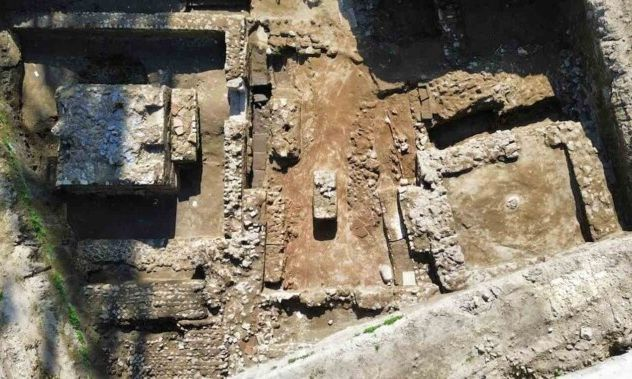According to research, ancient tailors may have utilized a piece of prehistoric bone with several puncture wounds.
The mystery bone is covered in 28 indentations, albeit not all of them are clearly apparent. The relic, which dates to roughly 39,600 years ago during the Pleistocene epoch, was found at a location in Catalonia, Spain, some 12.5 miles south of Barcelona.
The bone fragment from four different angles, with a white scale bar representing one centimeter. The flat side of the bone contains puncture marks that suggest it was a punch board used for tailoring hides. Doyon et al. / Science Advances under CC BY-NC
Using a chisel, people may have pierced the bone while holding leather over it, according to a work that was just published this month in the journal Science Advances. These holes could be sewn through to make a fitted clothing.
According to the study, if the bone is authentic, it would be the earliest example of a punch board and be 15,000 years older than the earliest known bone eye needles in Europe.
“It's a very significant discovery,” says Ian Gilligan, an Australian archaeologist who works at the University of Sydney studying the history of clothes but who was not involved in the study. “Finding any indirect evidence is crucial because there is no direct evidence for clothing in the Pleistocene. The world's oldest remaining pieces of textile are from about 10,000 years ago.”
“What [the new finding] tells us is that the first modern humans who lived in Europe had the technology in their toolkit for making fitted clothes,” Luc Doyon, a co-author of the study and an archaeologist at the University of Bordeaux in France, tells Science News' McKenzie Prillaman.
The bone was made roughly 40,000 years ago, not long after the first modern humans arrived in Europe. Clothing had probably been around for centuries at that point; according to Ruth Schuster of Haaretz, people may have started wearing clothes more than 120,000 years ago. A 2010 study on garment lice showed that humans may have initially donned clothing as early as 170,000 years ago, according to certain estimations.
But because clothing can deteriorate over time, it is challenging for scientists to directly examine the origins of clothing. Doyon told New Scientist that because clothing is a perishable item, “We do not have much information about clothing.” They are an emerging technology that we know nothing about.
The bone piece could clarify the situation. It appears to be from the hip of an equid, such as a horse, or from a member of the family Bovidae, which includes antelopes, sheep, and buffalo. The authors note that there are three tiny, isolated markings among the 28 punctures, as well as two unique sets—a group of ten “remarkably similar” notches in a row and a group of 15 that are not aligned. The team comes to the conclusion that these indentations resulted from six distinct instances of punching holes in hides.
In general, a line of marks may indicate that an object was either a work of art or was employed to record information. However, Doyon tells Science News that both explanations seemed unlikely in the case of this bone because some of the holes are difficult to see and the bone wasn't altered in any other way.
The researchers instructed experimenters to attempt to replicate the punctures using a range of prehistoric instruments, such as shaped antlers, bones, and horns, in order to find out how the Pleistocene humans formed the punctures. They discovered that the same kinds of puncture marks visible on the artifact could be produced by laying hides over a bone and striking a pointed, chisel-like flint instrument through the hide.
“We could make exactly the same kinds of changes. We came to our conclusions as a result”, Doyon told Haaretz.
According to Doyon, after punching numerous holes in the hide, individuals could then weave thread through the holes to create seams. According to the article, the findings show that hunter-gatherers at the time had the knowledge and skills necessary to create customised footwear and other leather goods.







